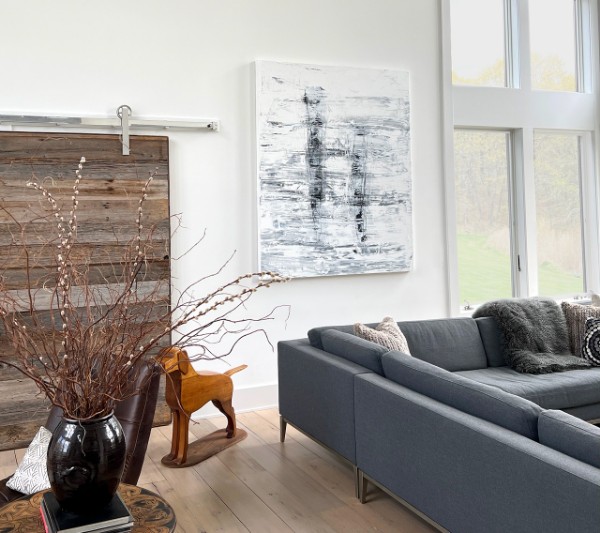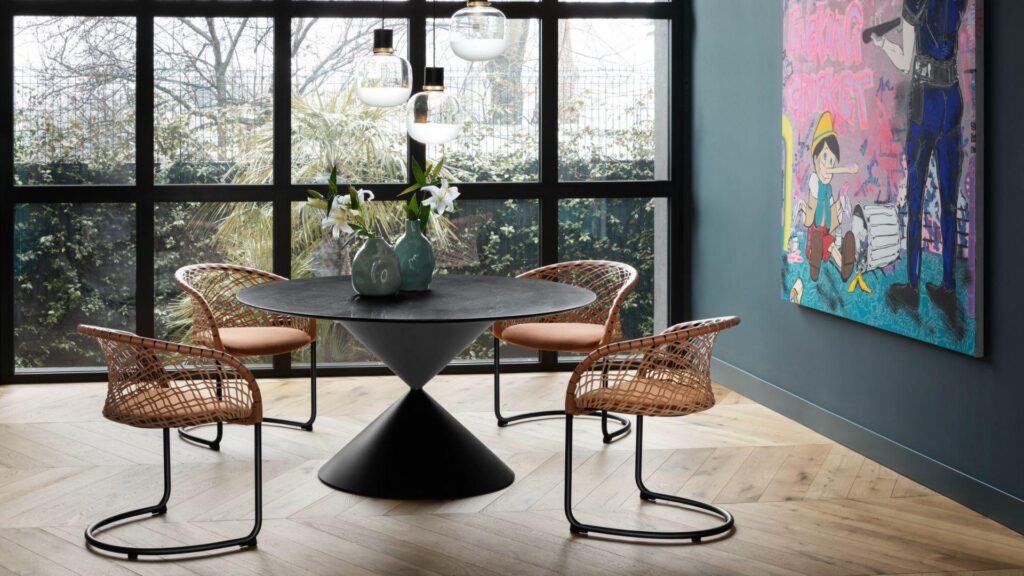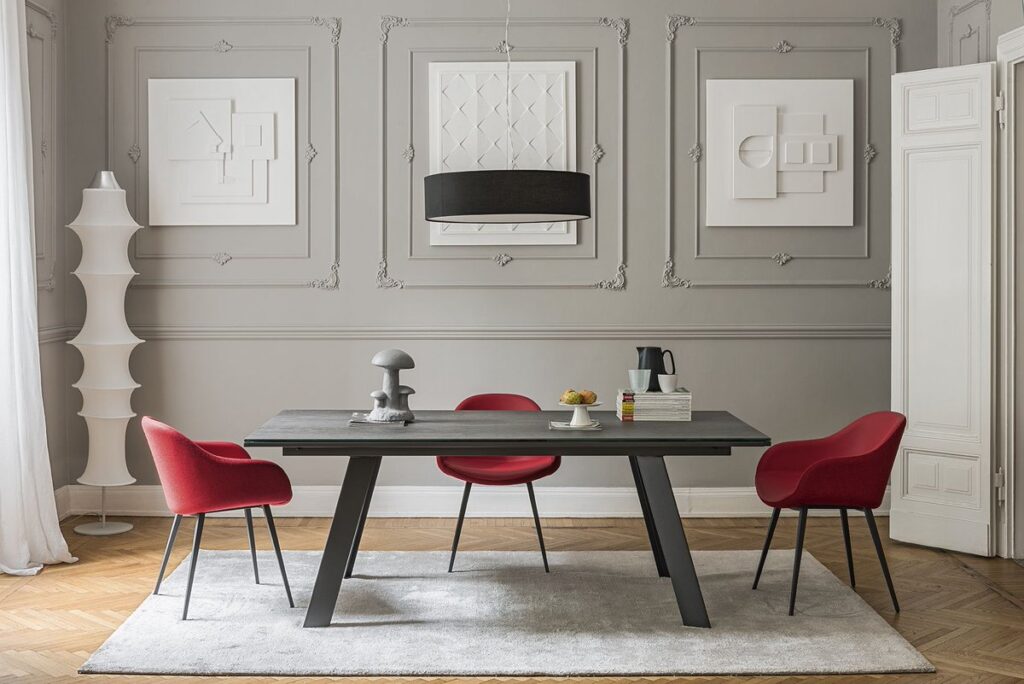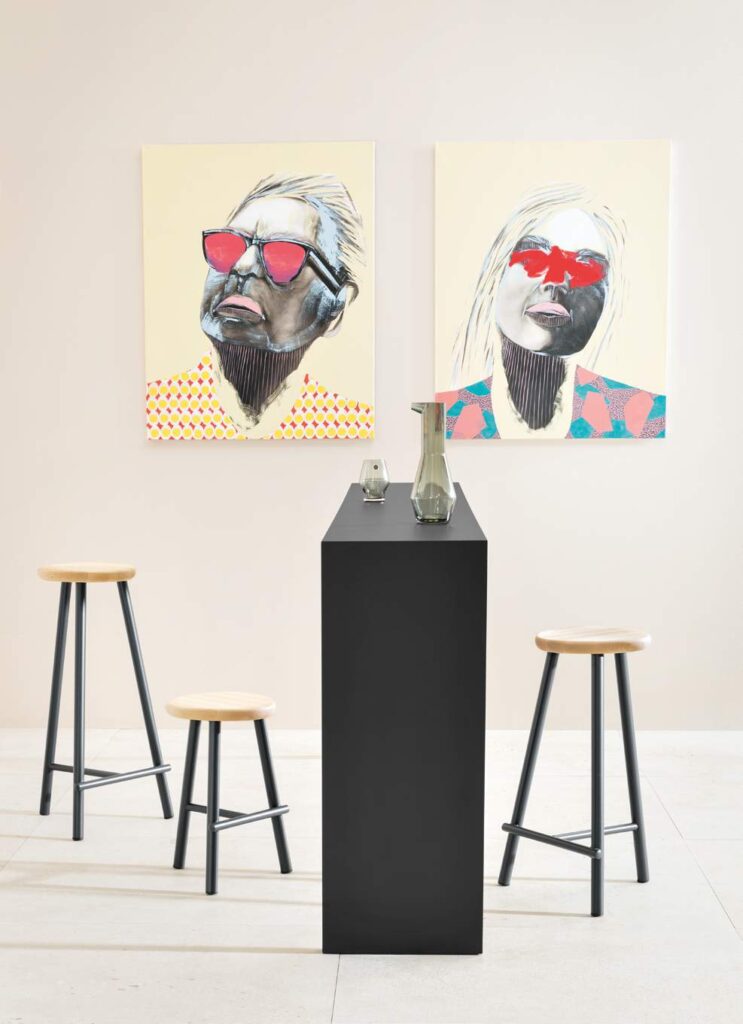The Relationship Between Furniture and Fine Art
How to make furniture and fine art dance gracefully in a space.
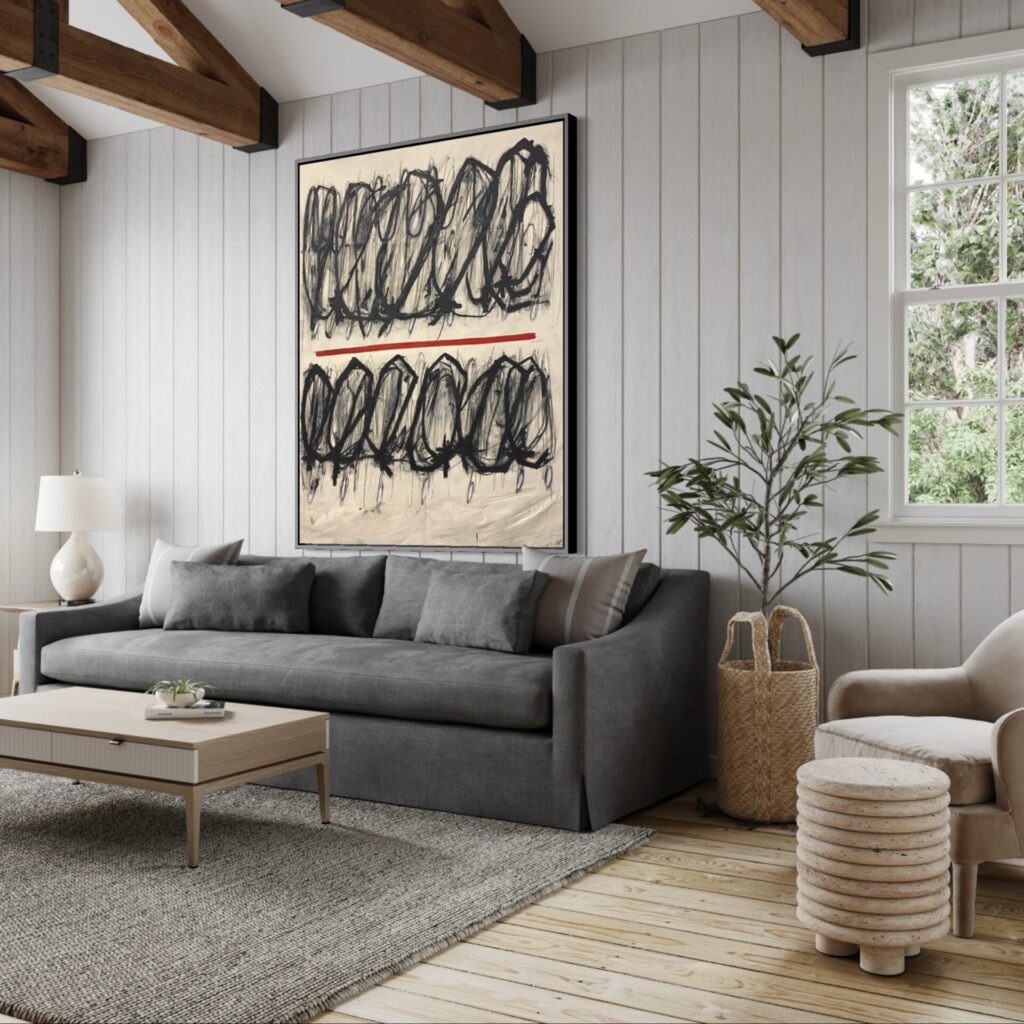
One of the primary advantages of custom art and furniture is the opportunity to create a space that is truly unique and exclusive. Much like the first image, with artwork by Jennifer de Klaver, the art and the furniture dance beautifully in the room, playing off of each other’s colors, movement, and positioning.
Create a Furniture and Fine Art Design That’s One-of-a-Kind
Unlike mass-produced items found in many stores, uniquely upholstered chairs, made-to-measure sideboards, and custom artwork are tailored to your specific preferences and design requirements. Now, of course, this level of exclusivity is what brings luxury and individuality to your design, ensuring that your space has a rigorous composition. Owning a custom piece of luxury furniture or artwork means you possess something that cannot be found anywhere else, making it a source of pride and a conversation starter.
Custom art and furniture also provide a wonderful opportunity for personalization and self-expression. With custom pieces, you have the freedom to infuse your personality, tastes, and interests into your space. From selecting the upholstery, wood type, size, and color to collaborating with skilled artisans and craftsmen, the possibilities are endless. This level of personalization allows you to create a space that is a true reflection of who you are, making it truly captivating and deeply meaningful.
Which should come first: selecting furniture or artwork?
The decision of whether to select furniture or artwork first is a common question that arises when furnishing a space. While there is no definitive answer, several factors can guide your decision-making process. Ultimately, it depends on your personal preferences, the design goals you have in mind, and the existing pieces you may already possess.
If you have a specific furniture piece that you absolutely love or wish to highlight, selecting furniture first can be a logical choice. By choosing artwork that enhances and accentuates the features of the furniture, you can create a visually striking composition that draws attention to the focal point. Obviously, you’ll want to consider the style, size, and color scheme of the furniture when selecting artwork to ensure seamless integration.
In some instances, taking an organic and iterative approach can be beneficial. Start by gathering inspiration and creating a mood board that includes both furniture and artwork ideas. Look for common elements, such as color palettes, themes, or materials, to identify potential connections. Gradually curate a collection of furniture and artwork simultaneously, allowing each piece to inform the selection of the other, resulting in a cohesive and visually pleasing space.
Things to consider when commissioning a piece of artwork in balance with furniture
Working with an artist to commission a piece of artwork for a room that is being decorated with custom furniture is an exciting and collaborative process. It lets you bring your vision to life and create a truly unique and personalized space. Here are a few things to keep in mind throughout the process:
- Define your vision: Begin by clearly articulating your vision for the space. Discuss the style, theme, color palette, and any specific ideas or concepts you plan on using to design the room. Think about how the artwork will complement the custom furniture and contribute to the overall ambiance of the room.
- Research and select an artist: Browse the Teal Canvas community of fine artists. Learn about each artist and view a portfolio of their existing works to find an artist whose style aligns with your vision.
- Establish communication: Reach out to a Teal Canvas advisor and express your interest in commissioning a piece. Initiate a conversation to discuss your ideas, preferences, and expectations.
- Collaborate and brainstorm: Collaborate with the artist to further develop and refine your ideas. Share your images, material swatches, mood boards, or sketches to provide visual references. Engage in a dialogue that encourages the artist to contribute their artistic expertise and creative insights. This collaborative approach can lead to the creation of truly remarkable and meaningful artwork.
- Settle on details: Discuss the practical aspects of the commission, including the desired dimensions, materials, medium, and timeline. Ensure that both parties have a clear understanding of the expectations, deadlines, and any specific requirements related to the installation or delivery of the artwork.
- Regular updates and feedback: Maintain regular communication with the artist throughout the creation process. They may provide progress updates, share sketches, or seek your input and feedback. Providing constructive feedback and expressing appreciation for their artistic interpretation will help guide the artwork toward your envisioned outcome.
- Installation and final touches: Once the artwork is complete, work with the artist to determine the best way to install and display it in harmony with the custom furniture. Consider factors such as lighting, framing, and placement to enhance the overall impact of the artwork and the furniture.
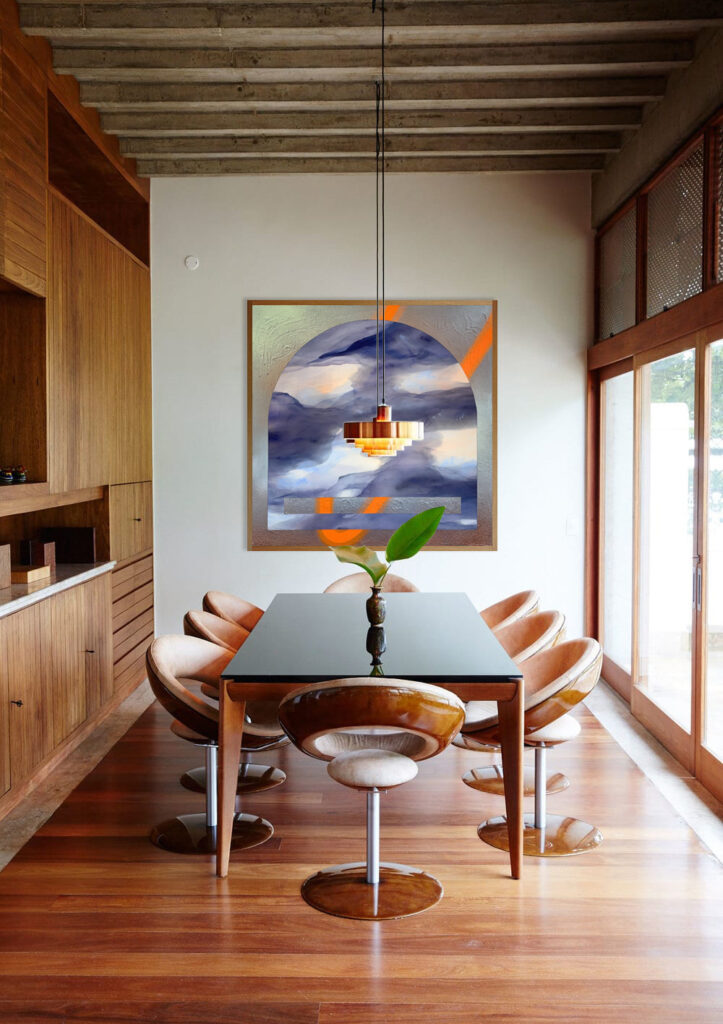
Commissioning artwork for a room with custom furniture is a collaborative journey that allows you to create a space filled with artistic expression and personal significance. Embrace the opportunity to work closely with an artist, and together, you can bring forth a masterpiece that perfectly complements the unique furniture, resulting in an interior design that truly reflects your style and vision.
Explore Modern Loft to shop unique designs from luxury furniture brands.
Yitty Glauber, Founder, Modern Loft
Highly curated collection of modern luxury furniture
Instagram, LinkedIn, Web

